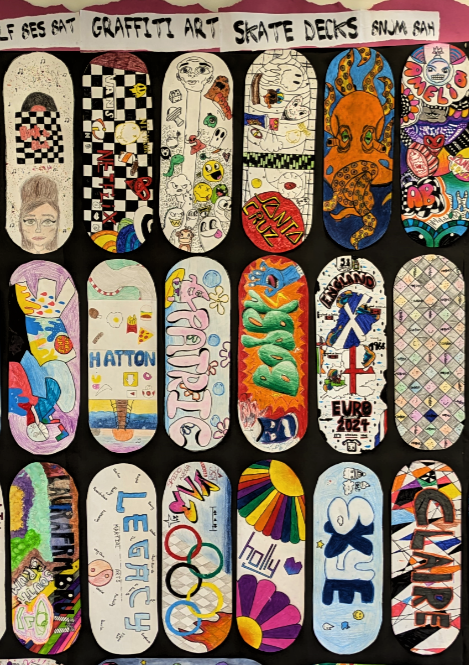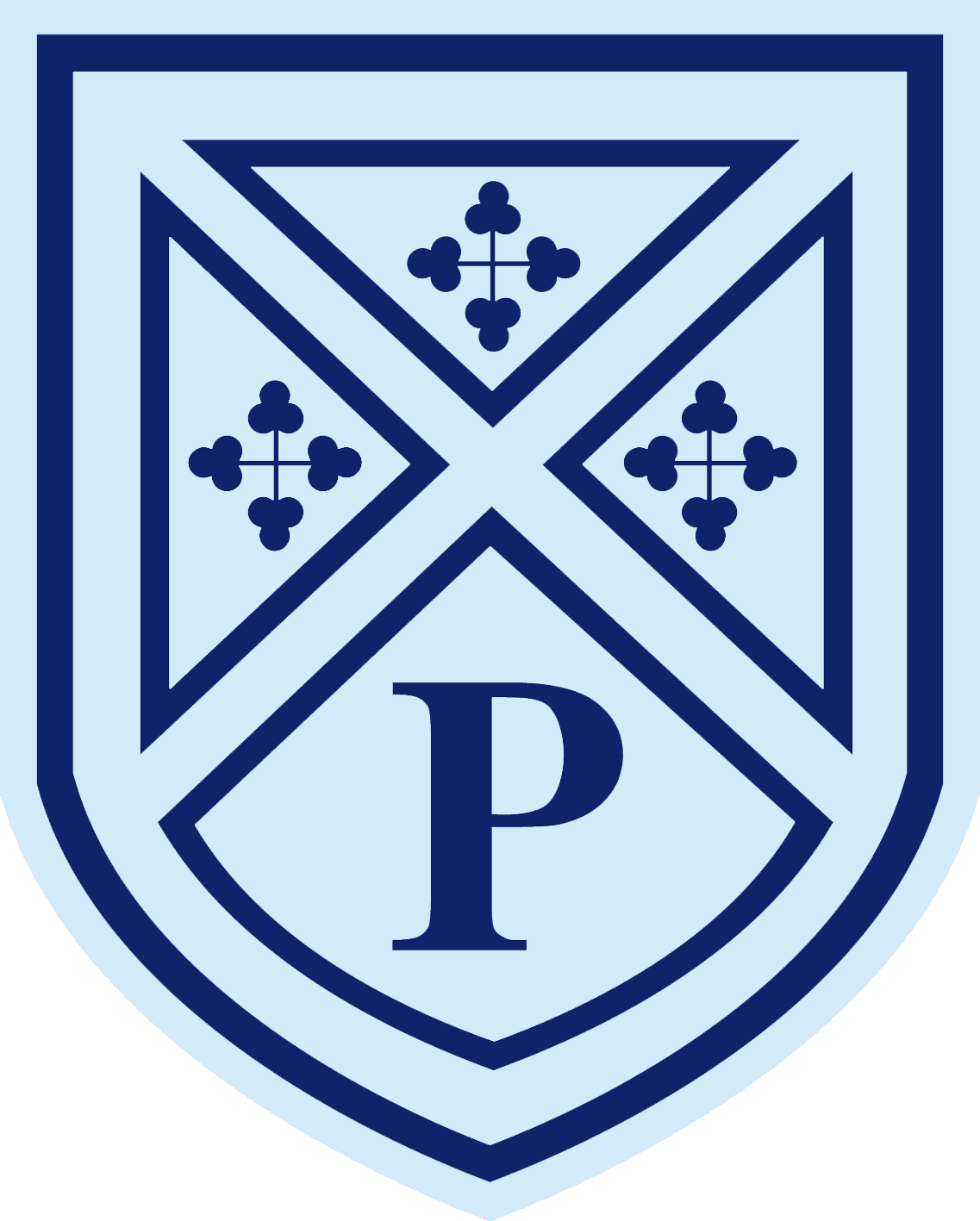Choose a Subject
At Parkside Middle school we ensure children access high quality art experiences through a broad, balanced, and progressive curriculum. Our Art curriculum provides children with a high-quality art and design education that engages, inspires and challenges pupils. It enables them to develop their knowledge and skills through experimentation, invention and creating their own works of art, craft and design. We aim to encourage a lifelong love of Art and creativity, which is underpinned by our array of extra-curricular provision.
Pupils will:
Our Art curriculum is designed to meet the needs of all our pupils, ensuring the National Curriculum objectives are met. We do this through:
What is distinctive about Art at Parkside Middle School:
Choose a Year Group
Year 5
Throughout the Art curriculum pupils will explore a broad variety of genres, materials, artists and techniques. They will develop their practical skills and enjoy an exciting and challenging curriculum.
Art in Year 5 Comprises of three Projects:
Autumn: ‘Mysterious Monsters’
Pupils are introduced to the artists Francois Thango & Max Ernst – opening their imaginations to the idea of mystical creatures!
Pupils explore a combination of animals, observational drawings, colour theory and designing their own mystical dragon head/mask.
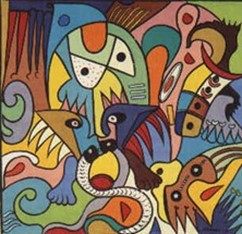
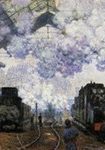
Spring: Impressionist Art
Introduction to the history of the Impressionists and their style.
The project includes: Research and exploration into the inspiration and time period of the impressionists; Knowledge and skills: Colour theory, watercolour paint techniques, wax resist, pastel and perspective.
Pupils create a variety of impressionist patterns and paintings; they will enjoy exploring and combining mixed media. Their final painting will reference the industrial revolution, perspective drawing and works by the artist Claude Monet.
Summer: Clay Making
Pupils will explore the variety of clay techniques presented by modern and traditional ceramicists. They will consider designing for purpose and aesthetics, exploring a variety of modern ceramicists. Pupils will then consider and explore clay workings techniques (Rolling, coiling, joining etc).
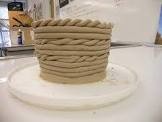
Year 6
Art in Year 6 comprises of three projects:
Autumn: ‘Into the Jungle’
Pupils will be exploring the work of Henri Rousseau - Art inspired by the rainforests and jungles.
They will produce observational drawing of plants, leaves, flowers and animals typically found in the jungle (Henri Rousseau of course never actually travelled anywhere exotic! It's all based upon his imagination).
Pupils to explore colour theory. Texture, tone and hue. They will broaden their geographical knowledge, building upon their Geography lessons in which they study biomes and climate.
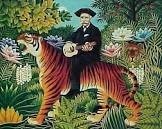
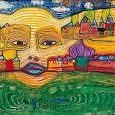
Spring: ‘Barmy Buildings'
Exploring the art and architecture of Friedrich Hundertwasser. A Painter, architect, ecologist and a visionary.
Pupils will explore his Art style and the deeper meanings behind it. Inspired by nature, they consider the impact of his ideas around beauty and sustainability. Pupils produce several designs based upon their appreciation for his style, creating a colourful clay tile.
Summer: Op Art
Optical Art is a mathematically-themed form of Abstract art. An impression of movement on the picture surface by means of optical illusion. Pupils explore the work of Bridget Riley and Victor Vasarely. We create patterns and Optical illusions of our own, finishing with a cuboid and a mono print.
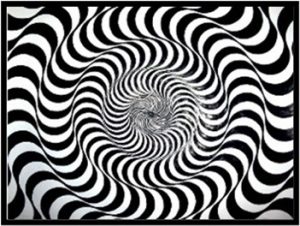
Year 7
Art in Year 7 comprises of three main projects:
Autumn: ‘The Weird & Wonderful’
An investigation into Contemporary British Art.
Exploring the world of British modern artists and the Turner Prize. Experimenting with graffiti and wire sculpture. We look at the deeper meanings behind artwork using design, perspective drawing and constructing models/clay. Artists: Damien Hirst, Marcell Du champ, Anthony Gormley.
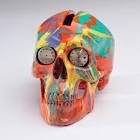
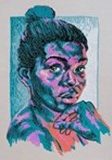
Spring: ‘Portraiture'
Pupils study artists throughout history, using observational drawing skills and producing portraits using a range of key art skills and techniques such as Fauvism and distortion. Compositions by historical and modern artists, use of artistic elements, drawing skills, proportion and mixed media.
Summer: Pop Art & Modern Culture
Pupils will be encouraged to create their own investigations of the Pop Art era. Looking at popular culture then and now. The project comprises of Playful and open-ended research, exploration of popular culture; decorative, colour, imagery, team working, paper sculpture and painting.
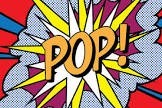
Year 8
In Year 8 the Art carousel consists of three critical, cultural & contextual projects exploring; observational drawing, symmetry, portraiture, print making and painting.
Autumn: The Art & Craft of Mexico – ‘El Dias de los Muertos’
Culturally informed artwork. Use of artistic elements, drawing skills, composition and mixed media design. Pupils choose from a variety of Mexican Art styles and festivals to inform their artwork. Cardboard/Clay/Press Print.
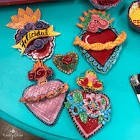
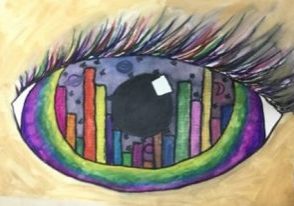
Spring: Surrealism & exploring pupils' own imagination
Still life, tonal painting, mixed media and Imagination. Art as a device to express deeper meanings and to encourage pupils to show independence, imagination, ownership and creativity.
Summer: Transition project: Identity
A transitional project aimed at building upon pupils' own strengths and successes’.
This incorporates typography, Zentangle, image enlargement, portraiture, drawing skills and collage. Open-ended research, exploration, drawing, graffiti and pattern.
